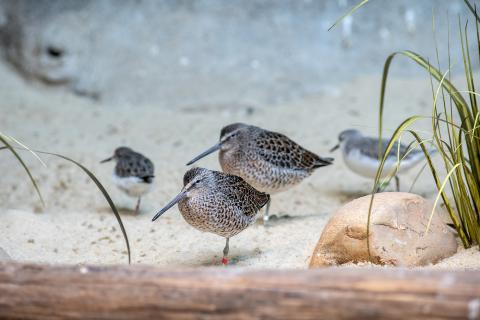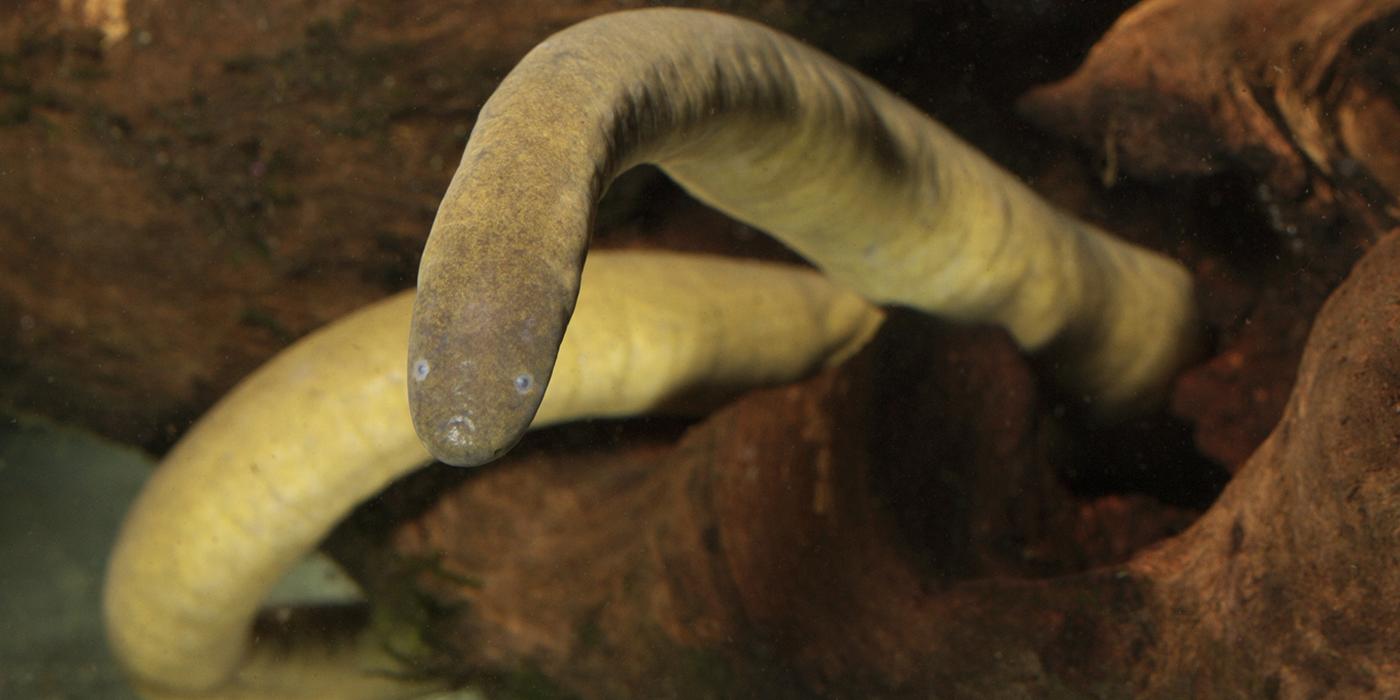Physical Description
Caecilians are long-bodied, limbless amphibians that look similar to earthworms because of segmental rings around their body. Although they are not exactly amphibian-looking, their bones, teeth, fat bodies and other structures show that they are related to salamanders and frogs. Their skin is slimy and smooth in adults and their color is dark gray. Adults' eyes are often small and useless. To compensate for their eyes, a sensory organ in the form of a tentacle lies on the upper jaw behind the nostril that carries chemical messages. Like all amphibians, caecilians breathe primarily through their skin but will occasionally come to the surface to breathe air through their lungs.
Size
Aquatic caecilians grow to reach lengths of 18 to 22 inches (46 to 56 centimeters).
Native Habitat
Most caecilians are burrowing, terrestrial animals; however, the rubber eels in the Amazonia exhibit are aquatic and are found in Colombia and Venezuela, mainly in lowland rivers and streams. Rubber eels burrow in sand and leaf litter.
Lifespan
Aquatic caecilians live between 4 and 5 years in the wild but are known to live longer in human care. Caecilians at the Smithsonian's National Zoo have lived to their mid-teens.
Food/Eating Habits
Most caecilians have two rows of teeth on the upper jaw and one or two on the lower jaw. They are carnivorous and feed on insect larvae, worms and small fish. After a slow approach, they quickly seize their prey. Their teeth are peg-like and used to grip and tear off chunks of their prey. At the Zoo, caecilians are fed earthworms. Occasionally, they will be given raw shrimp strips and squid tentacles.
Reproduction and Development
The caecilians on exhibit at the Zoo give birth to one or more live young.
Conservation Efforts
They are used as bait for fishing and are eaten by fish.
Help this Species
- Reduce, reuse and recycle — in that order! Cut back on single-use goods, and find creative ways to reuse products at the end of their life cycle. Choose recycling over trash when possible.
- Share the story of this animal with others. Simply raising awareness about this species can contribute to its overall protection.
- Avoid single-use plastics, such as plastic bottles, bags and utensils. Choosing reusable options instead can help reduce plastic pollution.
Animal News

Leaf-tailed Gecko Treated for Skin Cancer With Chemotherapy




